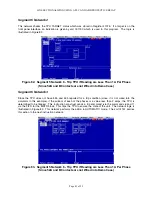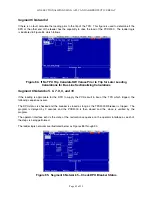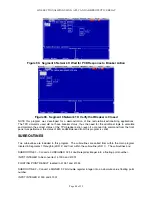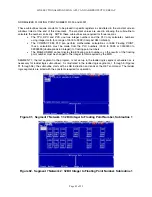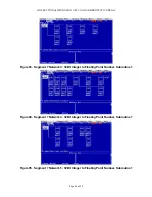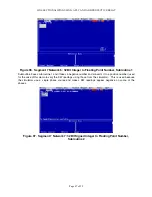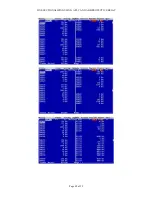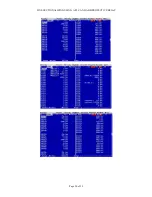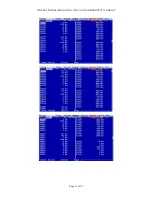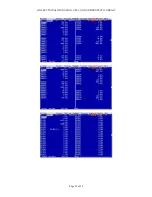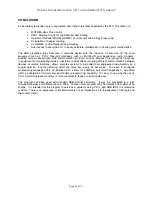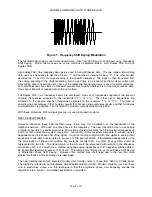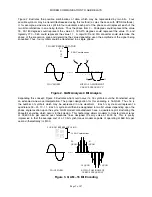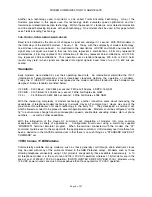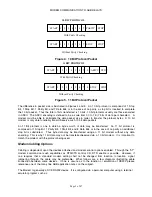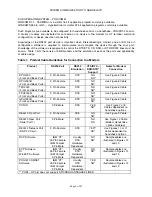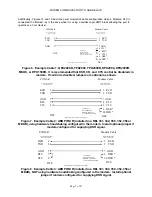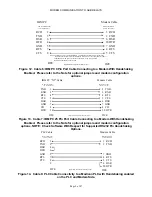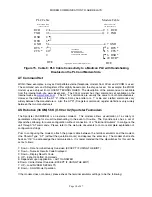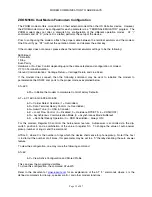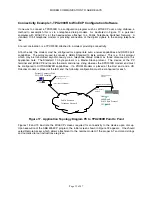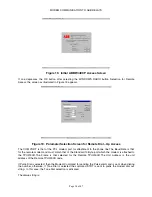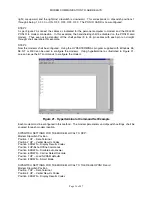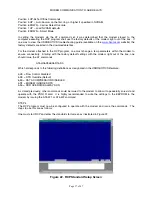
MODEM COMMUNICATION TO ABB RELAYS
Page 2 of 47
1 0 1 0
Figure 1. Frequency Shift Keying Modulation
The first Bell 202 modems used data transmission rates from 300 Baud to 1200 baud using Frequency
Shift Keying. FSK modems used one of two methods of implementation. Half Duplex FSK and Full
Duplex FSK.
Half duplex FSK: One frequency band pair is used to transmit/receive data. The one modem transmitting
data uses one frequency to denote a binary “1” and another to denote a binary “0”. The other modem
decodes the 1’s and 0’s for corresponding to the specific frequency. The signal is then translated from
the analog encoding to the digital encoding. Turn around time is an issue when the modems switch from
transmitting data to receiving data. Less of the telephone bandwidth range is used for communications,
but communications are slower in that each modem must signify whether it is to transmit or receive data.
One cannot transmit or receive data at the same time.
Full duplex FSK: Two frequency bands are employed. One set of frequencies represent the transmit
channel (frequencies allocated to the transmitted “1”’s or “0”’s). The other set of frequencies are
allocated to the receive channel (frequencies allocated to the receivers “1”’s or “0”’s). This type of
encoding has advantages in that no delay results for channel turnaround delay results and that full duplex
communications is possible. The first Bell 202 modems were developed using FSK.
With these limitations, FSK technologies are not used in modern modems.
NEXT DEVELOPMENTS
However innovative these FSK methods were, there was still a limitation on the bandwidth of the
telephone network. FSK used an entire phase in the frequency. The next innovation was to use analog
to digital converters to send/receive more information at faster data rates than the maximum frequency of
4,000 Hz that a telephone system may allow. New A/D or D/A converters were able to convert signals
dependent upon the phase shift of the signal. Using fast analog to digital (A/D) and digital to analog (D/A)
converters made data transfer rates in excess of 4000 baud possible. Intermediate developments using
the combination of phase and multiple bits could be encoded into a symbol. Four symbols could be
represented by two bits. The transmission of the bits could be referenced with relation to the frequency
and phase shift. For a brief time, a method using the analog signal phase shift, frequency allowed data to
be transmitted/received in excess of 4000 Hz. The method was referred to as Quad Phase Shift Keying
or Differential Phase Shift Keying. However, this method was short lived due to the fact that more
efficient methods of data encoding were developed.
The next development which elevated modem data transfer rates to those from 9600 to 33,600 baud.
The method is referred to as Quadrature Amplitude Modulation (QAM). Modern modems (such as those
sold in electronics stores) use this technique in that the amplitude, phase, and frequency encode the
digital bits into a symbol. A simplified explanation is provided.
Summary of Contents for REL 356
Page 23: ...ABB REL 356 Current Differential Protection 1 10 Product Overview and Specifications ...
Page 83: ...ABB REL 356 Current Differential Protection 3 36 Settings and Application ...
Page 127: ...ABB REL 356 Current Differential Protection 5 28 Testing ...
Page 186: ...LINE SECTIONALIZING USING A PLC AND ABB PROTECTIVE RELAY Page 49 of 53 ...
Page 187: ...LINE SECTIONALIZING USING A PLC AND ABB PROTECTIVE RELAY Page 50 of 53 ...
Page 188: ...LINE SECTIONALIZING USING A PLC AND ABB PROTECTIVE RELAY Page 51 of 53 ...
Page 189: ...LINE SECTIONALIZING USING A PLC AND ABB PROTECTIVE RELAY Page 52 of 53 ...

